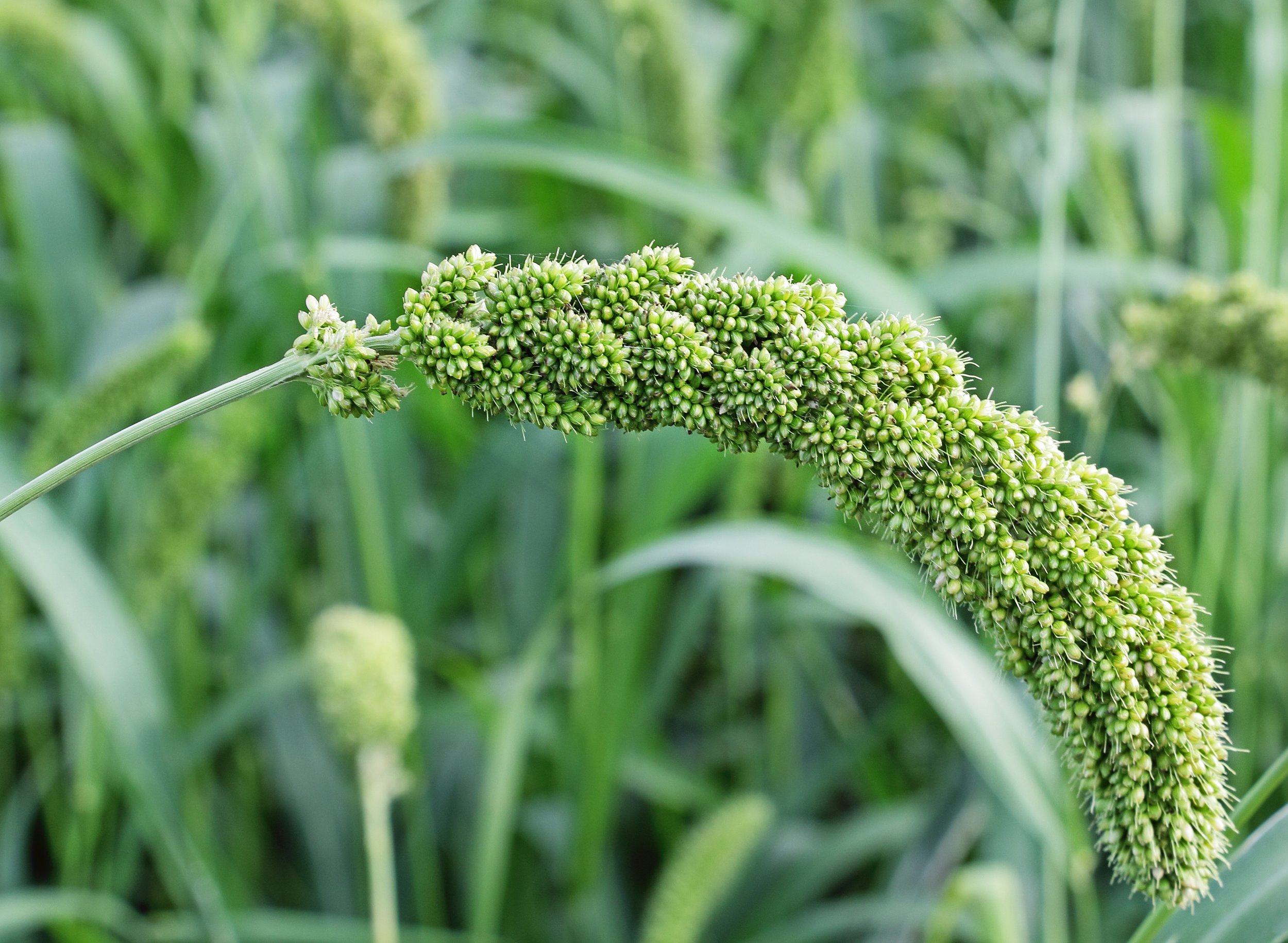Setaria italica (Foxtail millet)
Warm season, annual grass adapted to well drained soils in cool, semi-arid regions. Suitable for use at higher elevations. Shallow rooted and tolerant of highly saline soils. Primarily grown for single-cut hay and as a short-season emergency forage; palatable and nutritious. Excellent soil cover but may out-compete establishing perennials; can be used as a weed-suppressing smother crop. Seeds are a desired food for birds and small mammals. Varieties listed below.
DISTRIBUTION / ADAPTATION
INFORMATION & ATTRIBUTES
Family: Poaceae
Duration: Annual
Growth Habit: Graminoid
Native Status:
Growth Form:
Mature Height: 24in. - 60in.
Bloom Color:
Bloom Period:
Annual Precipitation: in.
Drought Tolerance:
Shade Tolerance:
Elevation:
Fire Resistance:
Fire Tolerance:
Nitrogen fixation:
SOIL ADAPTATION
Coarse Texture:
Medium Texture:
Fine Texture:
Salinity Tolerance:
CaCO3 Tolerance:
pH Range:
SEEDING NOTES
Seeds per Pound:
Seeding Rate: PLS lbs/acre
Season:
Days to Germination:
VARIETIES
Golden German - Late maturing; often seeded into wheat stubble for drought tolerant hay. Higher forage yields under irrigation than Siberian variety. Also use in warm season wildlife food plots for gamebirds, especially dove, quail and pheasant. (Released 1969)
Siberian - Short-statured and not a large forage yielder, but highly valued for its early maturity and hardiness. More drought tolerant than Golden German variety.


